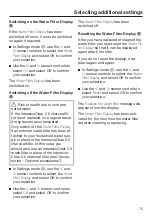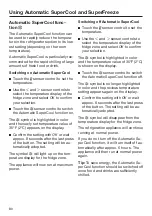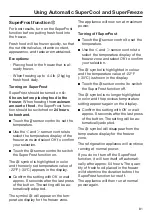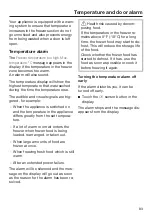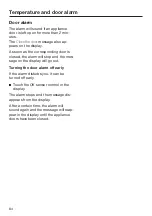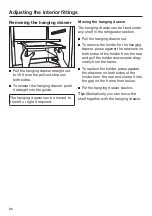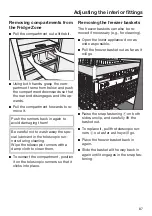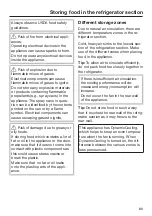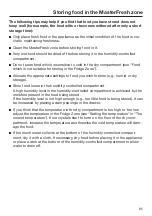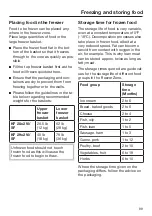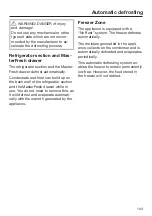
Storing food in the refrigerator section
89
Always observe USDA food safety
guidelines.
Risk of fire from electrical appli-
ances.
Operating electrical devices in the
appliance can cause sparks to form.
Do not operate any electrical devices
inside the appliance.
Risk of explosion due to
flammable mixes of gases.
Electrical components can cause
flammable mixes of gases to ignite.
Do not store any explosive materials
or products containing flammable
propellants (e.g., spray cans) in the
appliance. The spray cans in ques-
tion can be identified by the contents
printed on the can or by a flame
symbol. Electrical components can
cause escaping gases to ignite.
Risk of damage due to greasy or
oily foods.
If storing food which contains a lot of
fat or oil in the appliance or the door,
make sure that it does not come into
contact with plastic components as
this could cause stress cracks or
break the plastic.
Make sure that no fat or oil leaks
onto the plastic parts of the appli-
ance.
Different storage zones
Due to natural air circulation, there are
different temperature zones in the re-
frigerator section.
Cold, heavy air sinks to the lowest sec-
tion of the refrigeration section. Make
use of the different zones when placing
food in the appliance.
Tip:
To allow air to circulate efficiently,
do not pack food too closely together in
the refrigerator.
If there is insufficient air circulation,
the cooling performance will de-
crease and energy consumption will
increase.
Do not cover the fan in the rear wall
of the appliance.
Tip:
Do not store food in such a way
that it touches the rear wall of the refrig-
erator section as it may freeze to the
rear wall.
This appliance has DynamicCooling,
which helps to keep an even tempera-
ture when the fan is running. When
DynamicCooling is turned on, the dif-
ference between the various zones is
less pronounced.

